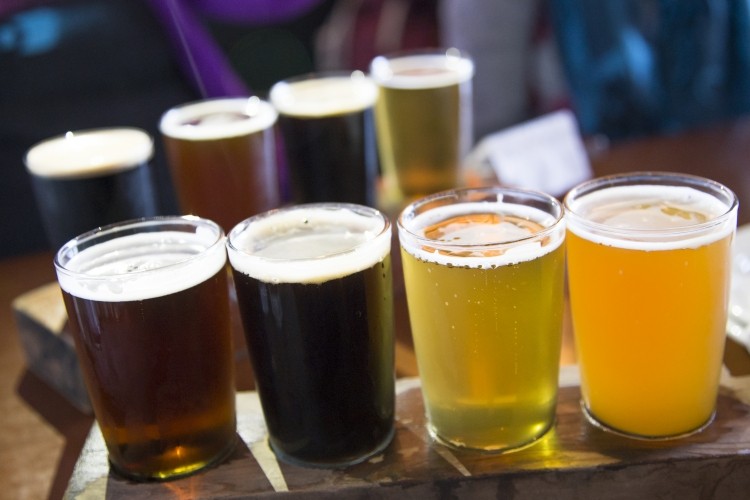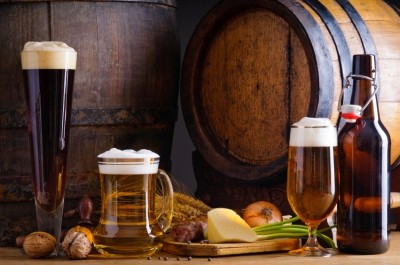What does the future hold for UK craft beer?

Bob Pease, president and CEO of the Brewers Association (the body representing US craft brewers), expects to see breweries in the UK continue to innovate locally, as well as gaining inspiration from both the US and elsewhere.
Pease will be speaking at Future Trends: Beer and Cider in London on Wednesday 22 June. Hosted by The Publican’s Morning Advertiser, the event will bring experts together to share knowledge and attempt to predict the future of the categories.
US craft: ‘There’s a lot to want to emulate’
It wasn’t so long ago that the craft beer movement in the US was simply a few scattered pioneers with a vision of making better beer, said Pease. Now, there are more than 4,200 craft breweries in the US, representing 12.2% of the overall market by volume. In 2015, 25.5m barrels were produced by US craft breweries.
“Our breweries continue to innovate and are widely recognized for making a diverse array of quality, world-class beers,” said Pease.
“There’s a lot to want to emulate. Essentially, I think that the US experience can and will factor into developments that take place in the UK.
“But, by that, I don’t mean blanket imitation. The UK has amazing beer traditions to build off of, and there are already small brewers here making their own world-class beer. That will continue by innovating locally and gaining inspiration from what’s going on in the global beer scene - both in the US and elsewhere.”
US and UK: similarities and differences
Pease sees many similarities between the US and UK craft beer movements. In both countries, the movement is driven by beer drinkers who appreciate quality, flavorful beer.
In addition, the brewing community is close-knit, with brewers eager to share knowledge and help one another.
“In terms of differences, I would argue that the US is a bit more advanced in terms of proper storage and handling practices, including cold chain infrastructure,” said Pease.
“That’s not to say that importers, distributors, retailers, or pubs aren’t focused on quality - the focus is perhaps just less widespread and robust than it is in the US. Fortunately, this seems to be changing as greater competition increases the need to deliver beer as freshly as possible to the consumer."
Future Trends: Beer & Cider
Held on Wednesday 22nd June at the LSO St Luke's, Old Street, London, the event will include the following speakers:
- Spiros Malandrakis, Euromonitor, who will look at what consumers are choosing to drink in the beer and cider category.
- Andy Turner, category and trade marketing director, Heineken UK, will outline what changes in customer drinking habits have meant for the business.
- Brigid Simmonds, BBPA will look at current tax pressures on the sector and what that means for its future.
- A panel will explore the merits of pairing beer and cider with food (Simon Stenning, MCA; Jane Peyton, beer educator; Neil Gannon, There's a Beer for That)
- Beer blogger and author Pete Brown will ask whether we should use the term ‘craft' alongside cider
What should UK brewers learn from the US?
Quality needs to come first, emphasizes Pease, and the Brewers Association offers resources to help breweries maintain quality.
“Quality starts with the brewing process itself and especially with consistency. But the brewery’s responsibility isn’t limited to production. For breweries that sell on-site, ensuring that draft lines are clean is critical and the Brewers Association has educational materials that can help.
“For breweries that sell through a distributor/retailers/pubs, the right partners that can maintain quality must be found. Breweries should consider reviewing and sharing the Association's Best Practices Guide to Quality Craft Beer with their partners.”
Secondly, Pease highlights the importance of craft beer’s presence and visibility to attract new consumers.
“There’s a lot of interest and passion around our industry, both in the US and in the UK,” he said.
“We need to make sure it’s easy for beer drinkers to learn more and find craft beers on the retail shelves. The more breweries that can engage and educate consumers, the better. And while I see craft beer at most of the UK retail chains these days, shelf space can be limited.
“Wider availability would help turn on more people who aren’t yet exposed to craft beer.”







